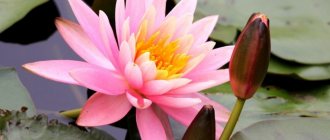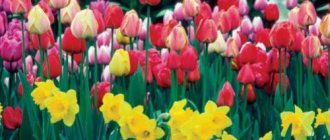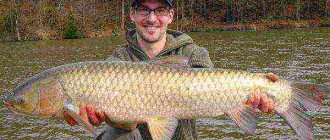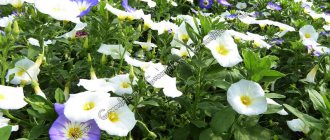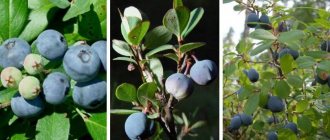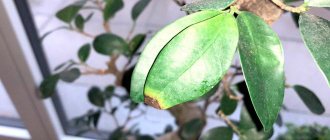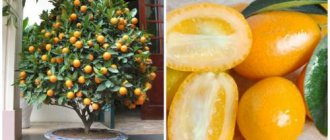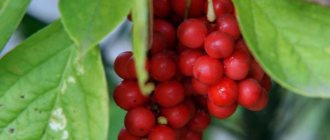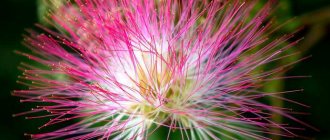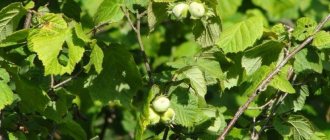An amazing plant - water hyacinth, known among gardeners as eichornia or “green plague”, is often used as an aquarium culture. In addition, it feels great in natural or artificial reservoirs. In warm water, Eichornia grows quickly and blooms beautifully. More recently, the plant was a curiosity for our climate. But the fragrant flowers of the most delicate shades, juicy bright leaves simply captivated connoisseurs of beauty. The decorative properties of hyacinth were appreciated by gardeners. In addition, the plant is an excellent natural water filter.
Description of hyacinth
Eichornia is an unusually beautiful plant. On the surface of the water it creates dense rosettes consisting of bright green leaves. The petioles thicken towards the base and form many cavities filled with air.
Water hyacinth grows in a pond, on graceful thin stems, if the elements are calm. In a seething state, the plant forms a fairly spreading rosette on short thick cuttings.
Eichornia has long roots. In dry or shallow ponds they can reach the muddy bottom. Having taken root in the ground, water hyacinth provides itself with additional nutrition.
Culture is rightfully considered an adornment of the landscape. It is especially beautiful during the flowering period. You just can’t take your eyes off the bright spectacle. Flowers are collected in rosettes of 5-12 pieces. In appearance, they are a little reminiscent of orchids. Flowers can delight you with beautiful blue, lilac or yellow shades.
The plant needs certain conditions. In this case, it will delight the owner with its beautiful flowering several times during the season.
"Planting" a plant
Even a novice gardener can grow a strong and beautiful water hyacinth. “Planting” and care will not require much effort. After all, the plant can withstand almost any conditions.
Experienced gardeners recommend “planting” eichornia as follows:
- The rosette of the plant must be placed in an aquarium with warm water. It is advisable to provide plenty of light.
- If the conditions are unsuitable, then when a new leaf appears, the old one will die.
- In a favorable climate, the plant will begin to develop. The roots will grow, the leaves will not die. Around May, a new rosette forms.
- You can transfer water hyacinth to the pond in June, when the weather is warm. The “boarding” process is very simple. The tropical beauty is simply lowered into the pond.
Use in landscape design
Some nuances should be taken into account when decorating a pond using this flower. Since it does not tolerate drafts and strong winds, care must be taken to protect it from such negative factors. Such a “fence” can be planted with cattails or marsh irises, as well as other similar plants that grow vertically along the coastline.
There is one more feature of this flower. The fact is that its proximity to it can be extremely difficult and even destructive for other types of aquatic plants, such as water lilies, for example. Many landscape designers try to combine these two plants in one pond, as they combine beautifully and complement each other. But eichornia is capable of growing very strongly, occupying the entire water surface, preventing the penetration of sunlight and using a colossal amount of oxygen.
This situation has a very sad effect on all living creatures living in the reservoir. In this regard, it is necessary to provide additional aeration so as not to destroy other living creatures.
Water hyacinth can be detrimental to other plants in the aquarium.
sunlight
If you provide a plant such as water hyacinth with proper care, it will delight you with beautiful flowering. It is not difficult to create comfortable conditions for culture.
First of all, remember that Eichornia loves sunlight. Therefore, it is better for her to choose illuminated areas in fresh, warm bodies of water. Although the plant can exist perfectly even in a shady area. However, for beautiful flowering it simply needs an abundance of sun.
At the same time, try to avoid drafts. The plant simply cannot tolerate them. And he might even die.
Interesting information
There are several interesting facts about this plant. The fact is that in some cases it can be useful, but in others it can harm the environment:
- Water plague. In water bodies where hyacinth lives, given suitable environmental conditions, it can grow quite quickly, thereby creating inconvenience for people, as well as posing a threat to flora and fauna.
- Water purification. This property of eichornia was discovered completely by accident. One day one of the flower growers was getting ready to go on vacation, but before that he decided to throw away a flower. He put it in a container with a soapy solution, and when he returned, he discovered that the plant not only did not die, but had also grown and perked up significantly, and the soapy water had become clear. This property was subsequently proven experimentally.
It is noteworthy that eichornia tolerates various harmful substances that may be in water quite well, while other plants can die as a result of such harmful effects of toxins. Moreover, its roots are capable of active growth and filling the entire surface of the reservoir. During the growth process, the roots of water hyacinth intensively absorb not only useful, but also harmful substances, such as oxidized metals, phosphates, phenols, insecticides, etc.
Due to its unique properties, this plant is often used as a natural purifier for contaminated water in septic tanks and areas with harmful runoff.
Temperature
We should not forget that the historical homeland of the plant is Brazil and South America, which have a hot climate. Therefore, eichornia feels most comfortable in warm conditions.
In order for the plant to fully and correctly develop, it is recommended to listen to the opinions of experts:
- For full development of the plant, a temperature of at least 22 °C is required. Taking this into account, planting of water hyacinth occurs in June.
- The optimal temperature for a heat-loving plant is 25-27 °C. And during flowering – 28-29 °C.
- The plant does not tolerate temperature changes.
- When it gets cold, hyacinth should be placed in an aquarium with water and moved to a warm room.
- In winter, the plant can withstand temperatures of at least 15 °C.
How to ensure that an aquatic flower survives the winter
Not all water hyacinths can survive winter even in warm home conditions. Many people notice that immediately after being moved to an aquarium or greenhouse, the leaf plates begin to turn black and the plant dies, although all the conditions for the flower are met. This means that the eichornia was removed too late, and it had time to freeze.
To prevent this from happening, you should not wait for cool weather - better sooner than later.
Even if the decrease occurs only at night, there is no need to take the eichornia out into the pond to “warm up” during the day - this is serious stress for the plant.
You need to remove the eichornia into an aquarium filled with water in which the flower lived, and place it in a place prepared for it. There should be no heating devices nearby - this will dry out the leaves. You should also not cover the container with a lid.
Water hyacinth, like a pump, is able to quickly suck out all harmful substances from water, so people like to plant it in their aquariums and ponds as a natural cleansing filter. It is able to absorb even petroleum products - it is a nutrient medium for the plant, and it copes well with filtering functions, improving the condition of water even in abandoned reservoirs.
If for some a floating flower is a “green plague”, then in other places it is a beautiful and original decoration that brings great benefits.
- pistia in the aquarium;
- Eleocharis parvula;
- Limnophila aromatica.
Features of cultivation
Despite the exotic nature of the plant, caring for the crop is quite simple. The most important thing is to provide eichornia with conditions that are as close to natural as possible.
In order for a plant to fully develop, it is necessary to provide it with the right environment. The culture needs water enriched with organic components. In such an environment, it will pleasantly surprise you with its graceful flowering.
Excellent additives for culture can be:
- mullein infusion or compost;
- purified bottom sludge;
- humus;
- complex fertilizers intended for aquarium plants.
By ensuring the supply of necessary nutrients, you will notice how the fertilizer affects the growth of the rosettes.
Eichornia thrives in slightly alkaline waters. She is not afraid of harmful impurities that can be destructive for other plants.
Branched powerful roots straighten out under water. They are capable of covering fairly large volumes. At the same time, water hyacinth is often called a “filter”. After all, the roots, like a pump, absorb not only organic matter. They absorb metal oxides, phosphates, insecticides, traces of phenols and oils. After a while, the pond cleans up perfectly.
Due to this property, the culture is widely used for filtering naturally polluted water bodies.
Kinds
Next, we will consider several types of water hyacinth, each of which has some differences in appearance and conditions of maintenance.
Eichornia azure
Latin name: Eichhornia azurea. The main difference of this species in the stem is that its underwater part has short internodes, and the above-water part has elongated ones. The emergent leaves do not exceed 8–10 cm in diameter and are colored in a rich green hue.
In the underwater species of the plant, the leaves are arranged alternately, have a more oblong shape, and can reach up to 15 cm in length. The flowers are blue in color with a dark purple center and a small yellow spot. The length of Eichornia azure does not exceed 60 cm.
Only an underwater type of plant can be planted in an aquarium, but it should not be allowed to grow above the surface of the water, otherwise the plant will lose its decorative value.
This species looks very advantageous in an aquarium, especially with colorful tropical fish. When keeping this species, a wide range of water hardness is allowed (2–16 °C), temperature and lighting are standard for this species.
Clay and sand can be used as a soil mixture. Every week you need to replace up to 1/4 of the total volume of water.
Variegated
Eichornia diversifolia. This variety of eichornia grows exclusively under water; the plant has no above-water part. The stem length is 60 cm, the root system is poorly developed.
The leaves are long and narrow, up to 6 cm in length and only 4 mm in width, arranged alternately, and painted in various shades of green. To preserve the beautiful decorative appearance of the plant, it should be trimmed as soon as the top reaches the surface of the water.
This species looks great on the back wall of the aquarium, creating the appearance of dense thickets. It is distinguished by its unpretentiousness and of all types of eichornia it is the simplest and most accessible for home maintenance.
Did you know? In their homeland they called Eichornia
"
water" or "green" plague . Due to its rapid growth, it quickly covers the surface of reservoirs with such a dense surface that it becomes a problem even for navigation!
In just 50 days, up to 1000 new rosettes can appear from one plant stem. However, successful cultivation will require a deep tank. It is also necessary to replace up to 25% of the water weekly. A mixture of sand and large pebbles can be used as soil. It is also important to monitor water hardness - this indicator should not exceed 6°, otherwise the parameters of the water environment are standard.
Centipede
Eichhornia crassipes is also often called beautiful eichhornia. This is a semi-submersible plant. The root system is powerful, creeping, the roots are thread-like, each root has air-bearing cavities.
Underwater and above-water leaves differ in shape: the former have a lanceolate shape and short rosettes. The above-water leaves are heart-shaped, the petioles are thickened, and have an ovoid shape due to the air-filled float chamber.
The flowers are large (up to 7 cm in diameter), emit a pleasant hyacinth aroma, colored in lilac and lavender shades, located on a short peduncle (20–30 cm) in the amount of 6–10 pieces. It blooms for only one day, after which the flowers, along with the peduncle, drown and begin to decompose in the water.
If you keep this species in an aquarium, it is very important to provide an air chamber with high humidity.
Did you know? Due to climate change, Eichornia began to rapidly cover the waters of Africa, impeding fishing and shipping. The annual potential economic damage from the spread of water hyacinth is estimated at $100 billion!
Wintering the plant
As soon as the air temperature begins to decrease, the plant must be moved to a warm room. Eichornia can overwinter:
- in the pelvis;
- aquarium;
- suitable transparent container.
The vessel should be filled with the same water in which the culture developed in the summer. It is recommended to add a little sludge to the container. This will allow the plant to take root and overwinter comfortably.
To prevent water hyacinth from dying at home, you should consider the following points:
- The plant no longer needs high temperatures. But you still need to provide heat. Optimal values are 20 °C.
- Hyacinth rosettes are very sensitive to lack of light. It is recommended to install a backlight above the container. This will allow you to get through the winter normally. Eichornia should receive light at least 14 hours a day.
- The plant needs warm water. The liquid temperature should be around 20 °C.
- Provide the crop with access to fresh air. However, do not forget that it does not tolerate drafts.
- Monitor moisture levels carefully. Evaporation of water can lead to the death of the plant. Therefore, you should periodically add water.
- To protect hyacinth from “hunger”, it is recommended to add a little fertilizer. Use special compounds for aquarium plants.
Errors in Eichornia agricultural technology
The decorative value of water hyacinth lies in the beauty of its flowers. Straight peduncles are crowned with from five to 12 pale purple one-day flowers.
Errors in agricultural technology when growing a tropical weed in an ornamental pond can lead to:
- Curvature of peduncles.
- Leaf rotting in winter.
- Excessive growth in the pond.
- Water hyacinth loses its leaves in winter.
- Death of a wintering specimen of Eichornia.
- Lack of flowering of water hyacinth.
Water hyacinth growing in a pond with standing water produces a straight, strong flower stalk. In the restless river water, a thin pedicel grows, inclined towards the water. The leaves of wintering water hyacinth are easily affected by rot. It is necessary to organize the planting on a floating raft so that the leaves do not come into contact with water
It is also extremely important not to cover the terrarium with a lid or ventilate it daily, avoiding harmful drafts
It is necessary to regularly remove excess specimens to avoid the expansion of water hyacinth. In winter, eichornia may lose several leaves, which is acceptable if there are no other problems. The plant will wait until spring safely if it is provided with support in the form of additional lighting and fertilizing. The specimen will quickly regain its attractiveness after returning to open water.
Water hyacinth should not be placed in dark basements for the winter. Tropical plants do not stop photosynthesizing throughout the year. Without light, Eichornia will quickly die. The second common misconception is transplanting a flower into soil or sand. The roots of this plant grow easily into muddy river soil. It should not be forgotten that water hyacinth never grows on the shore.
Eichornia does not bloom in cool summers. Typically, active flowering is observed in July-August, when the weather is hot. Water hyacinth delights with flowers at an air temperature of at least +25 °C. Experienced flower growers recommend purchasing eichornia seedlings from local gardeners. In this case, there is a guarantee to obtain accurate information about the flowering of water hyacinth in a given area.
